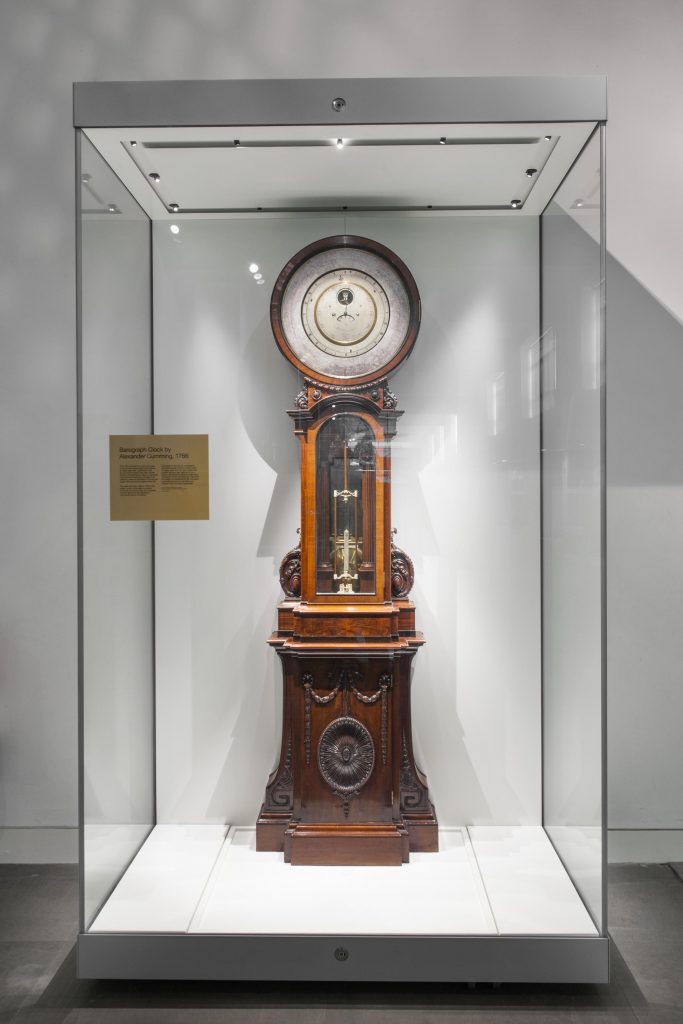David Rooney was the Science Museum’s Keeper of Technologies and Engineering. Below he explores the history behind the Wells Cathedral clock mechanism and an important barograph clock, as they are unveiled in prime new display positions at the museum. You can view both clocks in the Making the Modern World gallery.

The re-display of the Wells Cathedral clock mechanism and the barograph clock by Alexander Cumming will enable visitors to get up close with these amazing clocks while understanding their place in the wider history of British industrialisation.
The Wells Cathedral clock is one of the world’s oldest clock mechanisms, while the barograph clock was used in some of the world’s first urban climate studies. It includes two tubes of mercury on which a float rises and falls as atmospheric pressure changes. These measurements are recorded on a paper chart around the clock dial which rotates once a year.
Mechanical clocks were first invented in the late 13th century and the survival of the original mechanism from Wells Cathedral, believed to have been made in about 1390 when such machines were still new technology, is remarkable.

The Wells mechanism is now one of the oldest clocks in the world and a profoundly significant medieval British artefact. It is thought to have been constructed by the same makers as the clock at Salisbury Cathedral which, dating from 1386, is the oldest known surviving clock.
The Wells device has been displayed in South Kensington since the late 19th century, when it was replaced at the Cathedral by a newer clock. Visitors will now be able to observe more clearly than before, the medieval machine chiming the quarter hours and striking each hour as it has done over the last 600 years.

The barograph clock dates from 1766 and was made by Alexander Cumming, clockmaker to King George III. It is one of only four of its type known to have been constructed by the London maker.
After Cumming’s death the clock was bought by the famed meteorologist Luke Howard and used to make systematic observations that are among the world’s first urban climate studies. The clock’s exuberant carved mahogany case has been attributed to the esteemed cabinet-maker Thomas Chippendale and displays the detailed craft skill that expressed the importance of science in the 18th century.

The Wells Cathedral clock is one of our oldest and most cherished exhibits, while the barograph clock is an astonishing technical and aesthetic tour-de force and an icon of climate science. Both clocks demonstrate how the ingenuity of clockmakers through history has helped shape all our lives. Clocks today are still at the heart of modern science, technology and engineering.
The Wells Cathedral clock mechanism has been kindly lent to the Science Museum by the Chapter of Wells Cathedral where the original clock dial resides. The barograph clock was acquired with Art Fund support (with a contribution from The Wolfson Foundation).